Wild turkeys are the heaviest birds in the Galliformes family. Other birds in the Galliformes family include quail, pheasants, chickens, partridges, and peacocks. These birds live throughout much of the United States and into Mexico.
Wild turkeys and domesticated turkeys are large game birds of the same species (Meleagris gallopavo). Read on to learn about the wild turkey.
Description of the Wild Turkey
Wild turkeys look quite similar to domestic turkeys, if a little more scrawny. Female turkeys are lean, with dull brown feathers. At most, they usually weigh around 8 lbs. or so. Males, however, are larger and showier, as is the case with most birds.
Male turkeys have somewhat iridescent feathers and large fan-like tails. They weigh up to 24 lbs. at most, and are about 44 in. long.
Interesting Facts About the Wild Turkey
Though usually only thought of as Thanksgiving dinner, turkeys are actually quite interesting birds. There are quite a few interesting facts about wild turkeys, and they have many different unique traits and adaptations.
- Domestic North America – Most of our domestic birds originated in Eurasia, but domestic turkeys are one of the few domesticated animals that originated in North America. The only other domesticated bird in the Americas is the Muscovy duck.
- Odd Origins – Strangely enough, the turkey’s name didn’t even come from America! Researchers believe that turkeys got their name from trade with Europe. The birds passed through Turkey before being sold in Europe, creating the popular name.
- Turkey Demand – Everyone knows that people like to eat turkeys. This demand, both in North America and other parts of the world, resulted in a sharp decline of wild turkey populations. To help combat this, people began transplanting breeding birds into new areas outside of their natural range.
- Plentiful Fowl – This protection and transplanting resulted in successful population boosts. Nowadays, wild turkey populations are healthy and thriving in most areas. The IUCN lists turkeys as Least Concern, and their populations are on the rise.
Habitat of the Wild Turkey
Wild turkeys live in a variety of different habitats in North America. Their primary habitat is woodland and forest with mature growth trees. Turkeys inhabit forests of ash, oak, pine, cypress, elm, beech, and more.
They also live in meadows and grasslands with sparse tree growth. In urban areas, turkeys roam through farmland and even neighborhoods, foraging in fields and forests.
Distribution of the Wild Turkey
These birds live across much of North America, primarily the United States and Canada. Their natural range is smaller than their current range. Historically, wild turkeys lived mostly in the eastern and central United States and portions of Mexico.
Nowadays they are more widespread in Mexico, and also live throughout much of California and the northwest United States. There are various subspecies of wild turkeys throughout their range.
Diet of the Wild Turkey
Much like chickens, turkeys are omnivores and feed on a variety of plants, insects, and invertebrates. They do most of their foraging on the ground, but can fly up into trees. Turkeys eat a variety of acorns, seeds, berries, nuts, and fruits.
They also feed on grasses, leaves, and even bulbs. When given the opportunity, they hunt for beetles, snails, lizards, salamanders, grasshoppers, and various other insects.
Wild Turkey and Human Interaction
Wild turkeys have healthy populations throughout much of their range. This is primarily because each state implements hunting seasons and limits to maintain the population. Turkey protection and management is wildly successful across the board.
Their domesticated counterparts lessen the demand for turkeys by allowing wild turkeys to reproduce and thrive without excessive pressure on the population.
Domestication
Humans have domesticated wild turkeys. They are widely available and popular on farms and farming operations. Turkeys are obviously in high demand, particularly around the holidays. Decades of people selectively breeding turkeys has shaped them into docile, large, easy to manage birds.
Does the Wild Turkey Make a Good Pet
Wild turkeys do not make good pets, and can carry disease to domestic wildlife. Domestic turkeys chosen from responsible breeders with healthy livestock are a better option. They are the same species as wild turkeys. However, domestic turkeys are only appropriate to own in an agricultural setting.
Wild Turkey Care
Wild turkeys aren’t particularly common in human care, simply because we have their domestic counterparts to keep instead. Their care is virtually the same as domestic turkeys. They require a generous amount of space to forage for food and exercise.
As social birds, turkeys also need to live in groups. Commercial pelleted feed is widely available for them, and makes a great addition to the food they find while foraging in their enclosures.
Behavior of the Wild Turkey
These birds spend their nights in the trees and their days on the ground searching for food. They do not fly particularly well, but can easily reach the lower branches of trees to escape predators.
Most turkeys forage and sleep in small groups. During breeding season, the males vocalize (gobble gobble!) to attract females to him. He creates a small harem of females and guards them from other males.
Reproduction of the Wild Turkey
After mating, females care for the eggs and chicks on their own. Female turkeys lay between 4 and 17 eggs, and incubate them for about a month. As soon as the chicks hatch, they are able to follow their mother around and search for food. Mother turkeys do not feed their chicks, but instead lead them to food.

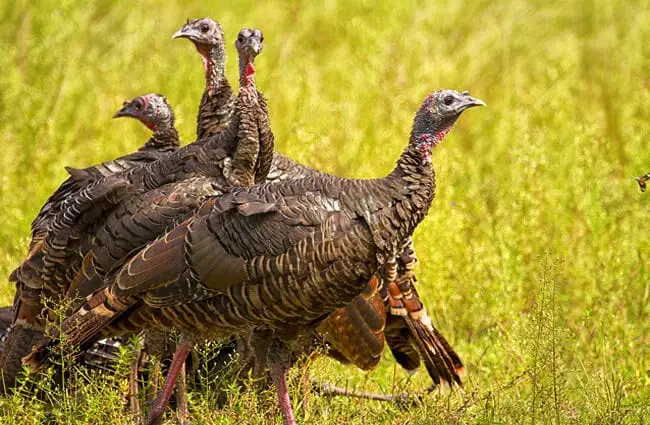
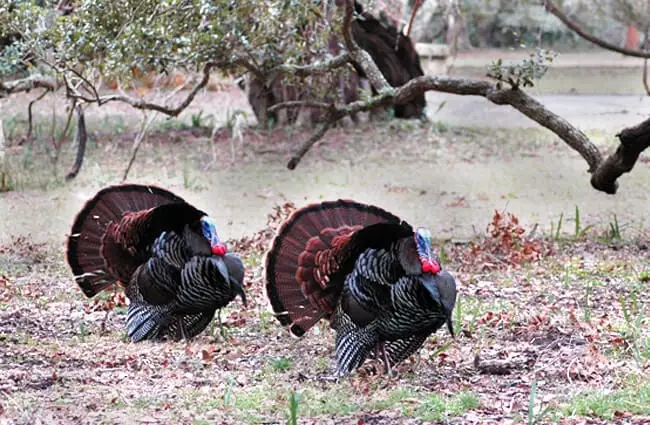

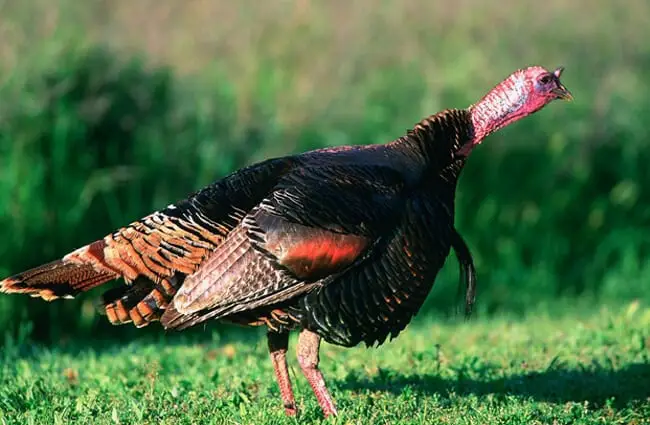


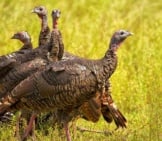
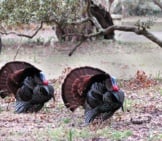


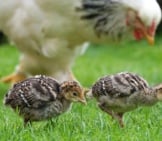
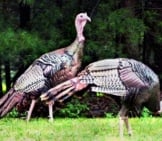
![Red Angus Closeup of a beautiful Red Angus cowPhoto by: U.S. Department of Agriculture [pubic domain]https://creativecommons.org/licenses/by/2.0/](https://animals.net/wp-content/uploads/2020/03/Red-Angus-4-238x178.jpg)












![Red Angus Closeup of a beautiful Red Angus cowPhoto by: U.S. Department of Agriculture [pubic domain]https://creativecommons.org/licenses/by/2.0/](https://animals.net/wp-content/uploads/2020/03/Red-Angus-4-100x75.jpg)

